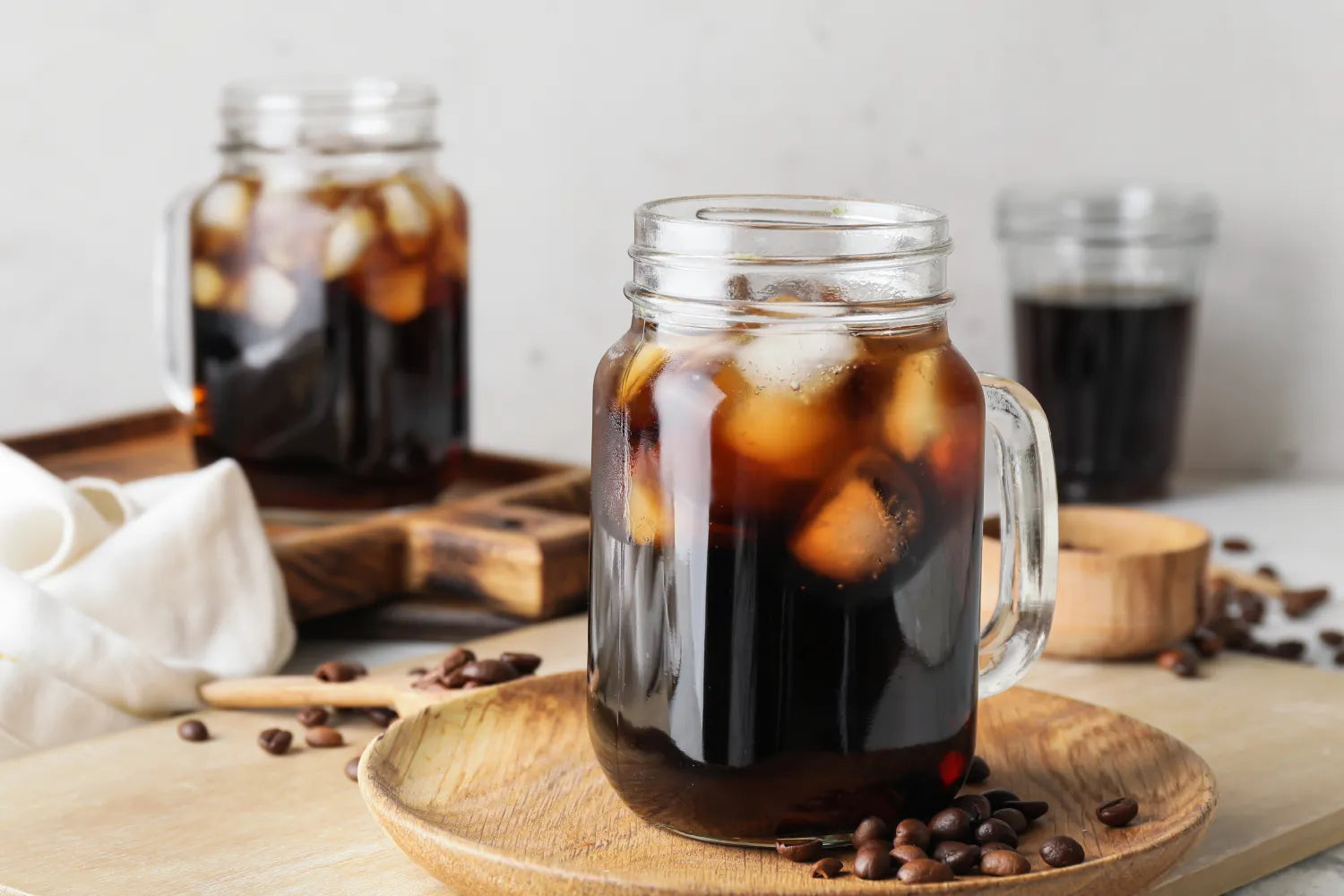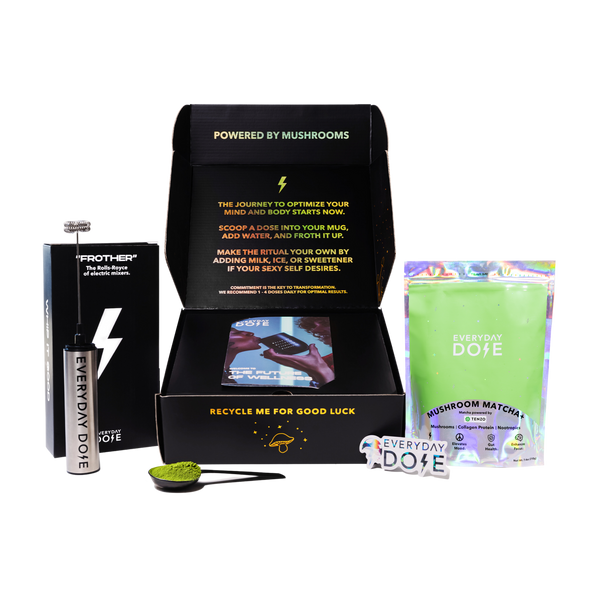Is Cold Brew Stronger Than Drip Coffee?

Do you ever need a little extra motivation to get up and go on Monday morning? For many people, this extra motivation lies in a super-strong cup of coffee. However, if you’re looking for a cup of coffee strong enough to overcome the Monday slump, should you opt for your regular drip coffee, or should you go for something a little more intense — cold brew, perhaps?
These two coffee-making methods couldn’t be more different. Seriously, they’re on opposite ends of the coffee-making spectrum. So, let’s dive in to discover which is your heavy hitter for sluggish mornings, and which one is better left to the weekday sidelines.
What Makes Coffee Strong?
Let’s clear the air about “strength” when it comes to coffee. Strength isn’t just about that jittery jolt of caffeine you feel — it’s a combination of caffeine content, flavor intensity, and concentration. While some people measure coffee strength in terms of bold flavors that hit their taste buds like a freight train, others define it by the number of milligrams of caffeine in their cup.
There are plenty of factors that influence coffee strength: the coffee-to-water ratio, grind size, brewing temperature, and steeping time, to name a few. Cold brew, for example, uses more coffee grounds and takes longer to brew than drip coffee, creating a concentrate that’s often diluted before drinking. Drip coffee, on the other hand, relies on hot water and a faster process to extract flavors, typically resulting in a less concentrated brew.
What Is Cold Brew Coffee?
Cold brew coffee might sound a lot like iced coffee, but it’s an entirely different beast. Made by steeping coarsely ground coffee beans in cold or room-temperature water overnight, cold brew boasts a unique flavor profile that many people prefer.
The magic of cold brew lies in its slow extraction process. Because it avoids high temperatures, it extracts fewer bitter compounds, which gives it a naturally sweet and mellow flavor. This makes it a popular choice for coffee lovers who are sensitive to high-acid coffee. However, because cold brew is so concentrated, its strength depends on how much you dilute it before drinking.
How Is Drip Coffee Made?
Drip coffee is the classic workhorse of the coffee world. It’s made by dripping hot water over medium-fine coffee grounds, with gravity doing the heavy lifting. Within just a few minutes, you have a full pot of liquid energy ready to fuel your morning.
Flavor-wise, drip coffee is known for its balance. The hot water extracts oils, acids, and flavor compounds more quickly than cold brew, resulting in a brew with a brighter, sharper taste and higher acidity. Caffeine-wise, it’s a bit of a wildcard. While cold brew is more concentrated, drip coffee packs more caffeine per ounce in a standard serving because there’s less water in the mix.
That being said, you can also adjust the strength of drip coffee by how you prepare it. Adjusting the grind size, coffee-to-water ratio, and brew time can make a significant difference in the final cup.
Cold Brew vs. Drip Coffee: Which Is Stronger?
Now that we’ve met our contenders, it’s time to put them to the test. When you get down to it, which coffee-making method really makes the strongest coffee? Read on to learn the final awards.
Caffeine Content
On its face, cold brew typically has a higher caffeine concentration because it uses more coffee grounds during its long steeping process. However, it’s usually diluted with milk or water before serving, which can lower the caffeine per serving.
Drip coffee, on the other hand, has less caffeine per ounce in its pure form but is usually not diluted before serving, making it feel more caffeinated. If you’re chasing the ultimate caffeine hit, serving size and brewing ratios play a much bigger role in determining which brew packs the biggest punch.
Flavor Profile
Cold brew is celebrated for its smooth, mellow flavor. It has a naturally sweet undertone that’s low in acidity, which makes it perfect for those who need to drink a lot of coffee, fast. It avoids the bitterness often associated with hot brewing methods.
Drip coffee, however, offers a more noticeable flavor profile, with brighter acidity and a fuller range of aromatic notes extracted by hot water. This sharper, bolder taste appeals to traditionalists and anyone who enjoys sipping on the flavor notes of a good cup of coffee.
Preparation
The preparation of cold brew is a patience game — it involves steeping ground coffee in cold water for 12 to 24 hours. Drip coffee, on the other hand, is quicker and more straightforward, with hot water passing through the coffee grounds in a matter of minutes.
Cold brew’s process requires planning and space for steeping, while drip coffee is much more convenient. The choice between the two often comes down to your schedule.
Of course, you don’t always have to base your choices on how much time you have in the morning. With our Mushroom Coffee+, all you’ll need to do is combine our powdered blend with some water — no brewing or steeping required. Even better, this works with both cold and hot water and it leaves no sediment swirling around in your cup. Turns out, you can have your brew and drink it, too!
Are There Health Differences Between Cold Brew and Drip Coffee?
Here’s where things get even more interesting: cold brew and drip coffee aren’t just different in flavor and caffeine content — they affect your body differently, too. For starters, cold brew’s low acidity makes it a gentler choice for your digestive system. If you’re prone to acid reflux or an upset stomach, cold brew can feel like a more soothing option compared to the sharper tang of drip coffee.
On the other hand, hot water extraction in drip coffee brings out antioxidants that cold brewing doesn’t quite capture. While antioxidants have a ton of health benefits, it’s worth noting that both cold brew and drip coffee are packed with polyphenols, which are a particular type of antioxidant.
The Bottom Line
Cold brew and drip coffee are so similar, and yet, there’s a world of difference between the two when it comes to flavor and caffeine. Because coffee strength is such a subjective concept, it’s hard to say which comes out on top. Ultimately, you’ll need to try them both to find out!
Whether you drink coffee cold or hot, we can all agree that the best coffee around is the one that pulls double duty. Our mushroom blends all satisfy your need for caffeine while also providing a bunch of health benefits due to ingredients like functional mushrooms, collagen, and L-theanine. Shop all of our blends today to find one that works for you!
Sources:
Spilling the Beans: How Much Caffeine is Too Much? | FDA
Do Coffees from Around the World Taste Different? | Latin American Coffee Academy








